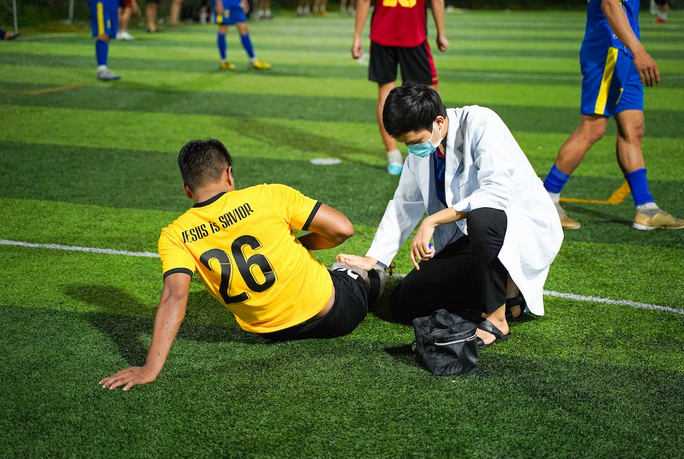Sports are a fantastic way to stay active while maintaining good well-being, but they also come with a risk of injuries. A professional physiotherapist in Guwahati mentioned that despite your athletic skills, being aware of the most common types of sports injuries can really make a difference. This way, you’ll know when it’s time to seek help from a physiotherapist. Today, let’s learn about some of these injuries and provide valuable insights into when to visit a physiotherapist for proper treatment.
Achilles Tendon Injuries
The Achilles tendon is basically a thick band of tissue connecting your calf muscles to the heel bone of yours. This tendon allows you to push off and propel yourself forward during activities like running, jumping, or even walking. Overuse, sudden increases in activity levels, improper footwear, and inadequate warm-up are some factors that can put stress on this vulnerable area.
When the Achilles tendon becomes strained or inflamed, it can lead to swelling, pain, and moving difficulty that happens to the foot or ankle. Treatment for Achilles tendon injuries may include rest, ice therapy, gentle stretching exercises, strengthening exercises for surrounding muscles, and possibly wearing orthotics or supportive footwear. In severe cases where there is a tear or rupture in the tendon itself, surgery may be required.
Jumper’s Knee

Also known as patellar tendinitis, this injury often affects many athletes, particularly those involved in sports that require repetitive jumping or running. It involves inflammation of the patellar tendon, which connects the kneecap to the shinbone. This injury typically occurs due to overuse and can result in pain, swelling, and tenderness around the knee area.
Athletes who participate in activities such as basketball, volleyball, or track and field are more prone to developing Jumper’s Knee due to the constant stress placed on their knees. But the main culprit is indeed excessive strain on the patellar tendon from repeated jumping or landing forcefully. Poor technique or inadequate warm-up exercises can also contribute to its development.
Little League Elbow
Young baseball players between 9 and 14 have a higher risk of developing this injury. This occurs due to repetitive stress on the elbow joint from throwing overhead pitches. The repeated throwing motion can strain the developing bones and ligaments in the elbow, leading to pain and discomfort. Symptoms of little league elbow include pain inside the elbow, difficulty straightening or bending the arm fully, weakness in grip strength, and swelling around the affected area.
If left unchecked and untreated, this condition can get worse and potentially lead to long-term complications. Gradually increasing pitch counts while allowing for adequate rest days can help reduce the risk of injury.
Rotator Cuff Injuries
 The rotator cuff is a muscle group and tendons surrounding the shoulder joint and providing stability, allowing for a wider range of motion. When these muscles or tendons become damaged or inflamed, it can result in a rotator cuff injury. These injuries often occur as a result of repetitive overhead motions such as throwing or serving in sports like baseball, tennis, or volleyball.
The rotator cuff is a muscle group and tendons surrounding the shoulder joint and providing stability, allowing for a wider range of motion. When these muscles or tendons become damaged or inflamed, it can result in a rotator cuff injury. These injuries often occur as a result of repetitive overhead motions such as throwing or serving in sports like baseball, tennis, or volleyball.
So what’s the treatment? These include taking rest and immobilization with the use of slings or braces, physical therapy exercises to strengthen the surrounding muscles, anti-inflammatory medications to reduce swelling and pain, as well as corticosteroid injections for more severe cases.
The Bottom Line
Sports injuries can happen to anyone, whether you’re a professional athlete or simply enjoy playing sports as a hobby. If you suspect that you’ve sustained a sports injury, don’t hesitate – to schedule an appointment with a physiotherapist who specializes in sports medicine. They will conduct a thorough assessment and provide appropriate treatment options such as manual therapy techniques or exercise programs tailored specifically for your injury.



